
Station Name: CHEADLE HEATH[Source:
Paul Wright]
heath_old4.jpg) Looking north in 1907 as a local train arrives at Cheadle Heath Station along the line that comes in from the Liverpool direction. It is quite possible though that the service is a 'South District' train that has travelled from Manchester Central. South district services would cross to the Liverpool lines to terminate at the island platform. This would leave the main line between Manchester and the south clear.
Copyright photo from John Alsop collection 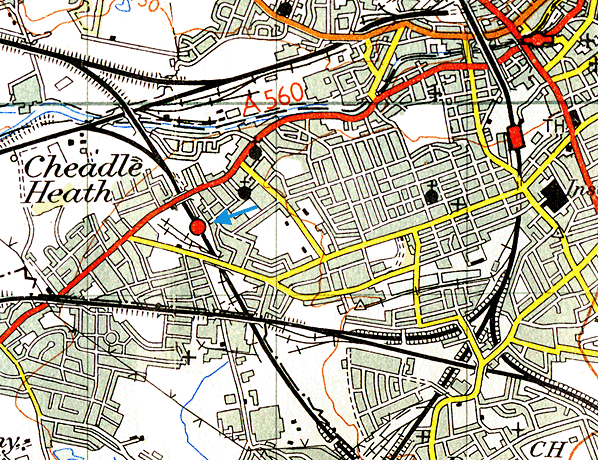 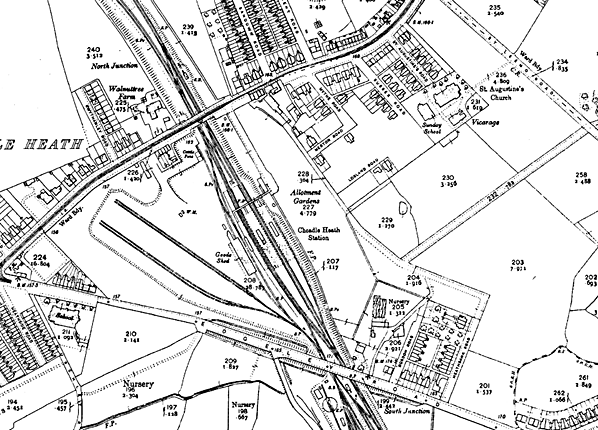 heath_old3.jpg) In Midland Railway days a goods train draws into the goods yard at Cheadle Heath station. The passenger station can be seen in the background.
Copyright photo from John Alsop collection heath_old5.jpg)
In September 1960 a Manchester Central to London St Pancras Pullman service calls at Cheadle Heath. The Pullman train is formed from a Diesel Multiple Unit designed specifically for the Pullman Service
that became known as the 'Blue Pullman'. The service operated along the Midland Route between Manchester and London between 1960 and 1966. It was an express service and the only intermediate stop was at Cheadle Heath where residents of the south Manchester suburbs and the Stockport area could join or leave the train. The service brought new levels of comfort to the railway and was very popular with the business community. After 1966 an electric Pullman Service operated from Manchester Piccadilly to London Euston. heath_old18.jpg)
Looking northwards at Cheadle Heath station on a winters day in 1960. The picture clearly shows all of the five platforms. Starting from the right is the bay platform. Next to it is the southbound fast line platform which was also known as the 'up' Manchester line platform. Moving to the island platform the platform face nearest to the photographer is the northbound fast line platform which was known as the 'down' Manchester line platform. The next platform to the right was a southbound platform which was known as the 'up' Liverpool line platform. Finally there was a northbound platform which was known as the 'down' Liverpool line platform. Liverpool trains travelled along the lines to the left of the picture hence the 'Liverpool' title bestowed on the platforms. South district terminating services from Manchester Central also tended to use the 'Liverpool Line' platforms so as to keep the main line clear.
Photo by Piu o Meno from his Flickr photostream heath_old10.jpg)
Looking north from Cheadle Heath's platform 4 on 18th September 1965 as ex LNER A3 number 4472 Flying Scotsman arrives with LCGB High Peak Railtour.
Photo by Bevan Price 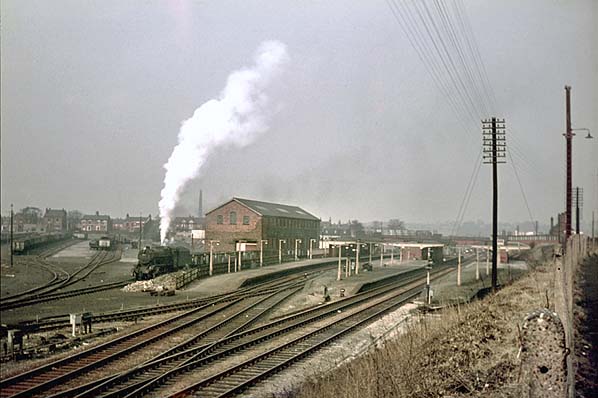
Looking north at Cheadle Heath station and goods yard in the 1960s. A train of mineral waggons passes the station on the avoiding line that ran behind the westernmost platform. The goods sidings are all full with waggons. In the foreground is the junction between the Liverpool and the Manchester lines, the tracks nearest to the photographer being the Manchester lines.
Photo by Alastair Wood. For more of Alastair's railway photos see his flickr photostream 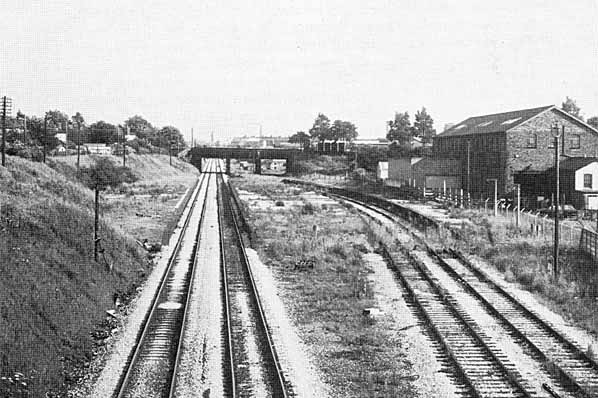
Looking south at Cheadle Heath station in 1972. Five years after closure the station buildings have all been demolished but the platforms are still extant. From the left of the photograph to the right the platforms were numbered 1, 2, 3, 4 and 5. In 1972 only platform 5 had lost its track although the lines through the former platforms 3 and 4 had clearly been out of use for some time.
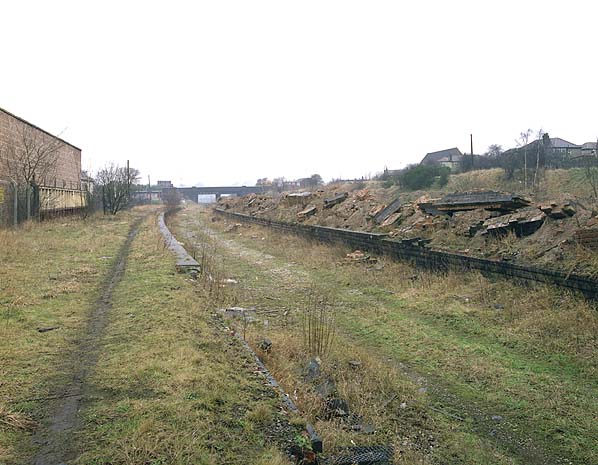
Looking north in April 1984 at the two island platforms. To the right is the island platform that was numbered 2 and 3 and to the left is the platform that was numbered 4 and 5. The two platform faces seen in this picture are 3 to the right and 4 to the left. At this date lines still ran through the former platforms 1 and 2. Beyond the bridge in the distance was a junction from where lines continued north to Manchester central and veered to the west providing access to Liverpool.
Photo by Nick Catford .jpg)
The site of Cheadle Heath station looking south in October 2012. Nothing survived of what had been a main line station.
Photo by Paul Wright 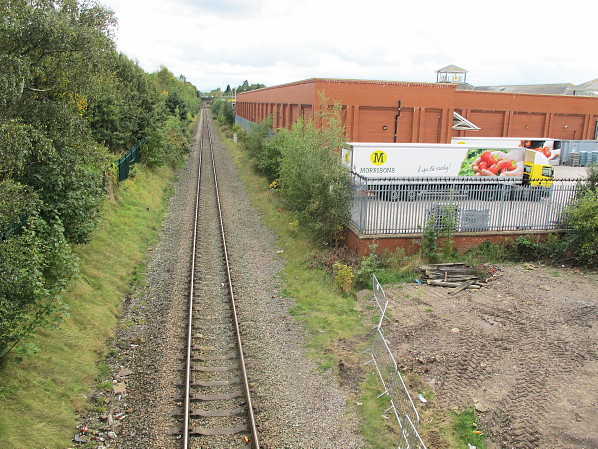 Looking south at the site of Cheadle Heath station in October 2012.
Photo by Malcolm Bailey
|
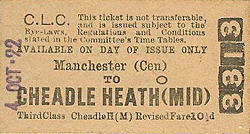
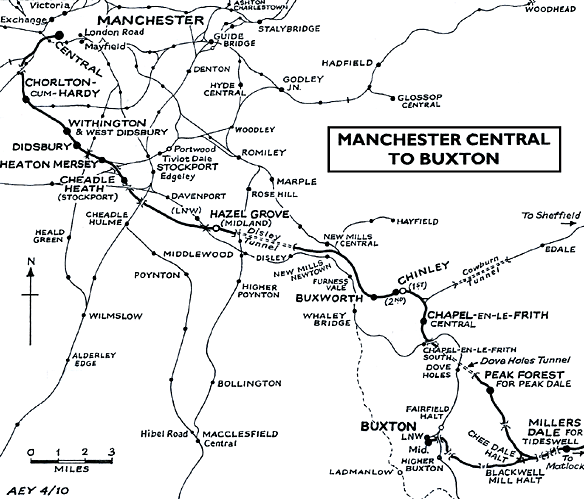
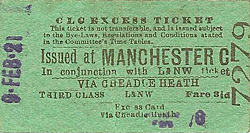
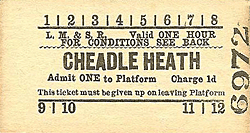
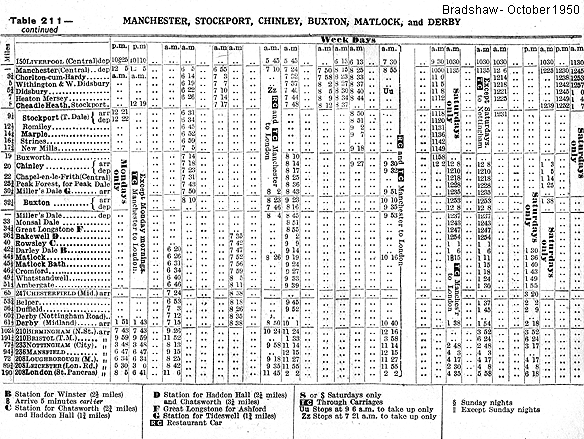
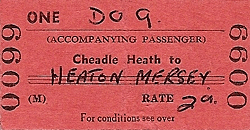
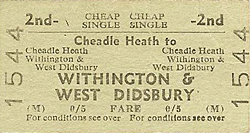

 Home Page
Home Page